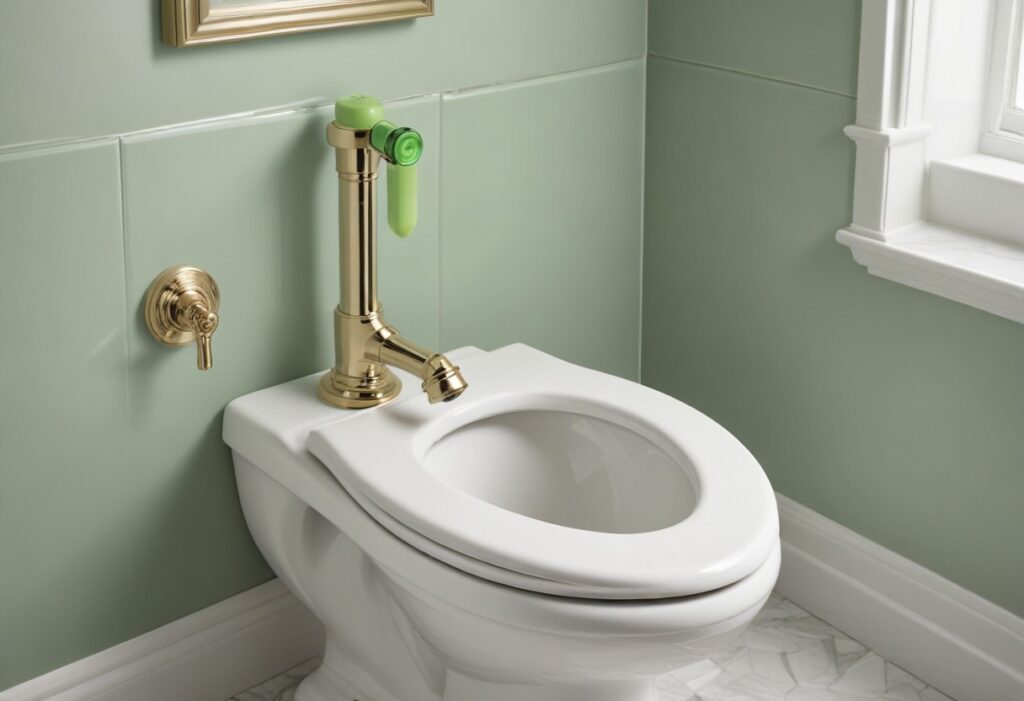- Flush Valve: The flush valve is the central component of a flushometer. It controls the release of water into the toilet or urinal bowl to initiate flushing. Common issues with flush valves include mineral deposits, worn-out seals, or mechanical failures. When a flush valve malfunctions, it can result in incomplete flushing, leading to waste and odors lingering in the bowl. In severe cases, a stuck or leaky flush valve can cause water wastage and potential water damage to surrounding areas.
- Vacuum Breaker: The vacuum breaker is a crucial safety feature that prevents backflow of water from the toilet or urinal into the potable water supply. Common problems with vacuum breakers include clogs, leaks, or improper installation. A malfunctioning vacuum breaker can compromise the integrity of the potable water supply, potentially leading to contamination and health hazards.
- Handle or Push Button: The handle or push button is the user interface that triggers the flush valve to open and release water into the bowl. Issues with handles or push buttons often involve wear and tear, loose connections, or faulty mechanisms. A malfunctioning handle or push button can lead to difficulties in flushing, inconvenience for users, and the need for manual intervention to initiate flushing.
- Diaphragm or Piston: Inside the flush valve, the diaphragm or piston is responsible for regulating the flow of water and sealing the valve when not in use. Issues such as tears, wear, or debris accumulation can affect the diaphragm or piston’s functionality. A faulty diaphragm or piston can result in inconsistent flushing, water leaks, or even complete failure of the flushometer.
- Flow Regulator: The flow regulator controls the rate of water flow during flushing, contributing to water conservation efforts. Problems with flow regulators may include blockages, damage, or misalignment. A malfunctioning flow regulator can lead to excessive water consumption, increased utility costs, and environmental concerns due to water wastage.
- Spud Coupling Assembly: The spud coupling assembly connects the flushometer to the toilet or urinal’s water supply line. Issues such as leaks, corrosion, or loose connections can arise with this component. A malfunctioning spud coupling assembly can lead to water leaks, water damage to surrounding structures, and disruptions in the flushing process.
- Tailpiece: The tailpiece is the pipe that connects the flushometer to the toilet or urinal bowl. Common problems with tailpieces include leaks, corrosion, or improper alignment. A malfunctioning tailpiece can result in water leaks, inefficient flushing, and potential damage to the plumbing system.
- Stop Valve: The stop valve is a shut-off valve used to control the flow of water to the flushometer for maintenance or repair purposes. Issues such as leaks, corrosion, or valve failure can occur with stop valves. A malfunctioning stop valve can lead to difficulties in shutting off water supply, necessitating urgent repairs and potentially causing water damage.
- Control Stop: The control stop is a valve that allows for adjusting the water flow rate and flushing duration. Problems with control stops may include leaks, blockages, or valve malfunctions. A malfunctioning control stop can result in irregular flushing patterns, water wastage, and difficulties in controlling water flow.
- Flushometer Cover: The flushometer cover encloses the internal components of the flushometer, providing protection and aesthetic appeal. Damage to flushometer covers may occur due to impacts, corrosion, or vandalism. A damaged flushometer cover can compromise the flushometer’s functionality, expose internal components to environmental hazards, and detract from the overall appearance of restroom facilities.
In conclusion, each component of a flushometer plays a vital role in ensuring efficient and reliable flushing in toilets and urinals. Understanding common issues that can affect these components is essential for timely maintenance and repairs to prevent potential consequences such as water wastage, contamination, and structural damage. Regular inspection, cleaning, and servicing of flushometers can help mitigate risks and ensure optimal performance and longevity.

